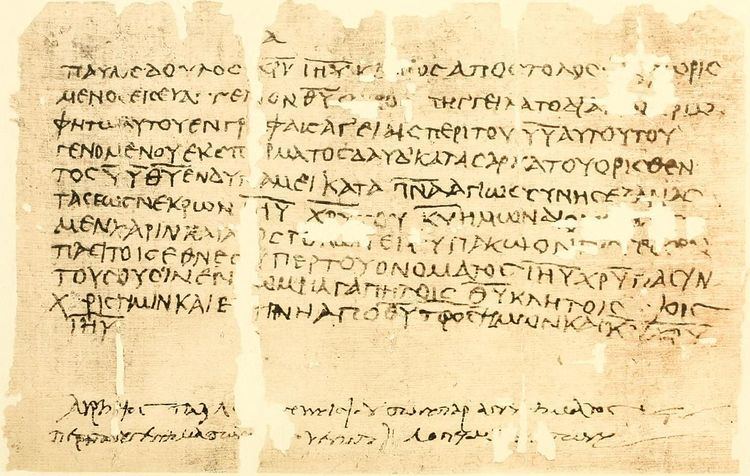Name P. Oxy. 209 Date 4th century Size 25.1 x 19.9 | ||
 | ||
Similar Papyrus 9, Papyrus 4, Papyrus 75, Papyrus 46, Papyrus 3 | ||
Papyrus 10 (in the Gregory-Aland numbering), signed by
Contents
Description
The manuscript is a fragment of one leaf, written in one column per page. The surviving text is of Romans, verses 1:1-7. The manuscript was written very carelessly. The handwriting is crude and irregular, and the copy contains some irregular spellings. A part of verse 6 is omitted (εν οις εστε και υμεις κλητοι who are called to belong to).
The nomina sacra are written in an abbreviated way.
The Greek text of this codex is a representative of the Alexandrian text-type. Aland placed it in Category I. The manuscript is too brief for certainty. The only variant of any importance is Χριστου Ιησου in Rom 1:7, where the manuscripts all have the reverse order.
History
The papyrus was found tied up with a contract dated in 316 A.D., and other documents of the same period.
It was discovered in Oxyrhynchus, Egypt, and is currently housed at the Houghton Library of the Harvard University (Semitic Museum Inv. 2218), Cambridge (Massachusetts).
